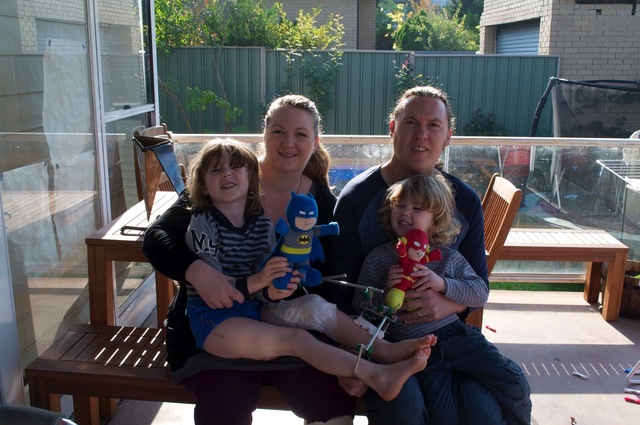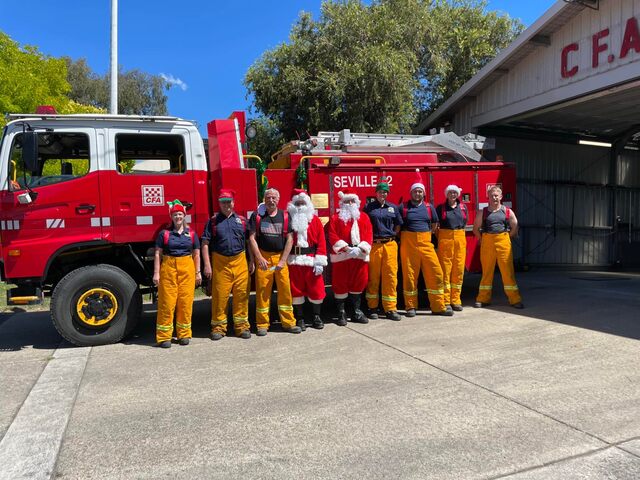Warning, this story contains graphic descriptions of a car accident and surgeries afterwards.
Transport Accident Commission (TAC) is a Victorian Government-owned organisation whose role is to promote road safety, support those who have been injured on roads and help them get their lives back on track.
Despite being clarified about the TAC’s roles on its website, a group of TAC clients have encountered hurdles in getting support from the organisation.
Healesville resident Tamara Tesseyman said she was frustrated by the TAC’s service.
“Having a disability is expensive, and like most Victorians, I felt confident that people who are disabled by an incident involving a car are taken care of very well by the TAC,” she said.
“What I have learnt is that this is far from the truth. TAC clients, sometimes known as TAC victims, have to fight for everything we need.”
On February 25 2013, Tamara was walking into the local Bunnings Warehouse with her family.
She was walking on the footpath holding the hand of her four-year-old son, Angus.
Her husband Mike was following them with their two-year-old son, Bram.
Tamara heard a loud revving sound.
Before she could figure out what it was, she and Angus were pinned on the store wall and the car was spinning its wheels.
Both the mum and the four-year-old kid were stuck between the wall and the car.
They could be freed thanks to help from a bystander who reached into the car and turned off the engine.
“My leg was an exploded mess, and I realised the substance on the wall was part of my leg. Gus was flown to the Royal Children’s Hospital where he was in and out of surgeries to save his leg,” Tamara said.
“I had my leg-saving surgeries at the Royal Melbourne Hospital. After two weeks, Gus was able to go home with lots of screws, skin grafts and an external cage drilled into his bones on his little brother’s third birthday.
“When I woke in the hospital the next day after my first surgery, I could not believe that my left foot was poking out of the sheets still somehow attached to my body. Five weeks after the day that changed our lives, I was able to return home to my little family to continue my recovery with them.”
Since the accident, Tamara has suffered from permanent foot drop caused by the lack of dorsiflexion.
Her orthotist has made her a custom exoskeleton called an ankle foot orthosis (AFO) to artificially create dorsiflexion and enable her to walk in a safe and consistent manner.
However, Tamara claimed TAC has either denied or delayed approving her claims for her treatments.
Recently, TAC kept delaying making a decision for her claim for a new AFO.
The AFO claim was finally approved on 7 April after she told TAC that her old AFO was completely broken.
The client said she needs to get her AFO maintained every six months and change it every two years.
“Without my AFO, I can’t walk. I can walk around my house but it’s not very safe. I can fall over really easily because I can’t lift my toes, it’s really easy for me to trip over my toes,” Tamara said.
“They have approved my AFO, however, I still have to fight for physiotherapy, exercise physiology and home services. They stopped providing home services, and they’re trying to end my psychology appointments by the end of this year.
“I’m not the only one. It’s happening with a lot of people. I’ve had a lot of people reaching out to me since I posted on Facebook. Some of them are going through even worse than I’m going through. A lot of people are denied the same things I’m getting denied.
“(The TAC) doesn’t go into details about the reasons (why they denied the claims). Their initial response, generally, is to say, ‘We don’t agree with your GP at some stage.’ And then they say, ‘We’re going to send your requests to the clinical panel.’”
The TAC supports around 45,000 clients each year via a range of different service offerings and may pay for reasonable medical treatment and certain other services that people may need as a result of injuries from a transport accident.
The needs of every person are different, and the TAC looks at each case individually when determining what to pay and for how long.
When making decisions about treatment and services the TAC can pay for, it must follow the provisions of its legislation, the Transport Accident Act 1986.
For an additional resource on how the TAC makes decisions, please visit: tac.vic.gov.au/clients/how-we-can-help/how-we-make-decisions?drop=3
“The TAC has supported (Tamara) with (her) recovery journey since (her) accident in 2013 and continues to provide relevant supports,” a TAC spokesperson said.
“The TAC cannot provide any further details on individual claims for privacy reasons but is committed to working work with the client to address any concerns.”
People, who are unsure of the service offerings and supports available by the TAC, are encouraged to contact the TAC on 1300 654 329.
Next week Star Mail will follow up with two other TAC clients’ stories who have similar issues which Tamara has suffered from for a long time.







